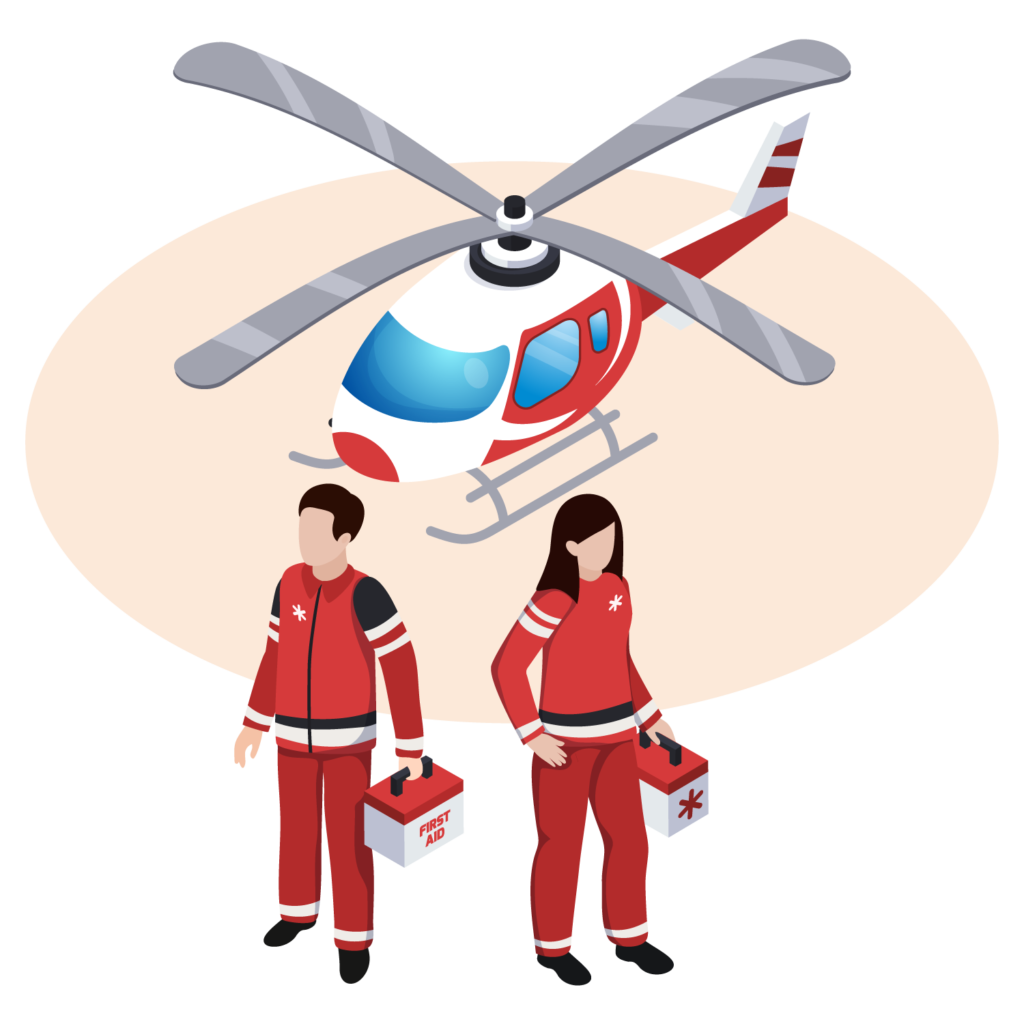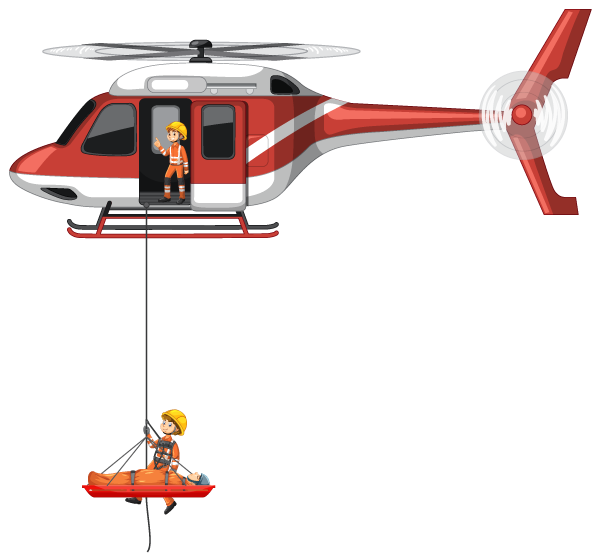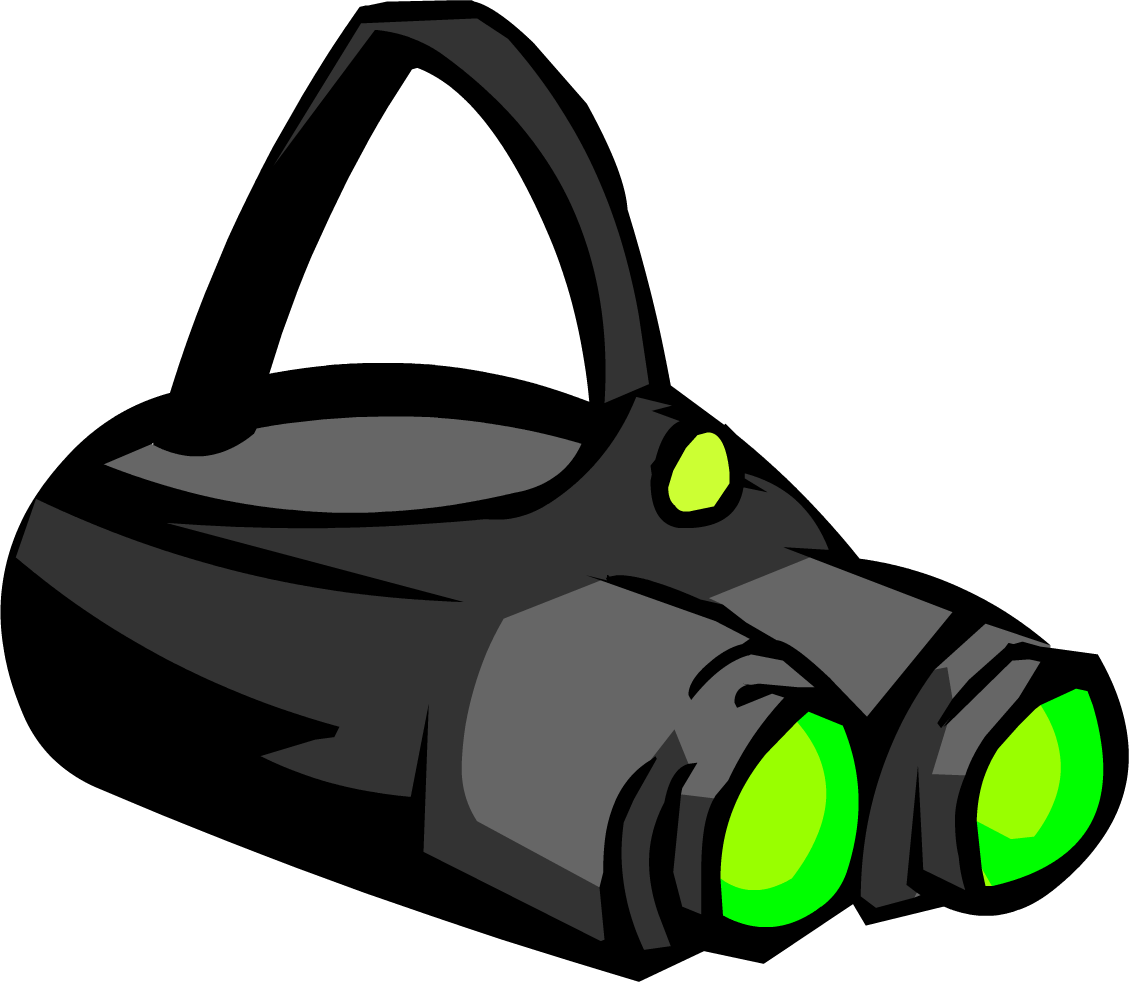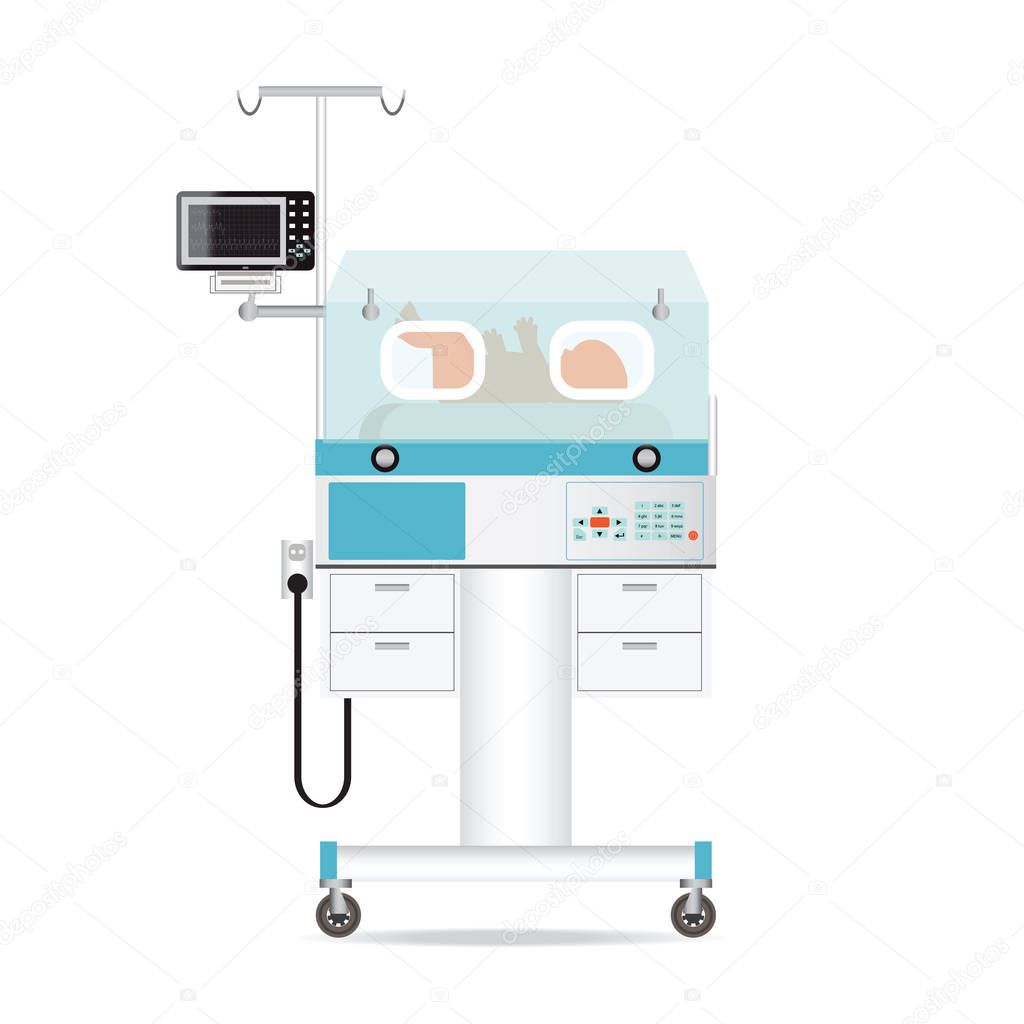Our specialized crew
Emergency Air Ambulance Pilots
Pilots are responsible for the aircraft and ensure that the mission is carried out quickly and safely while maintaining effective communications with the operations centre. At any time, one of the two pilots can be called to help the medical team at the accident site, both are trained to help administer care if necessary. Our pilots are highly qualified and have more than 10,000 flight hours, as well as several licenses and certifications, including VAR for night flights, and specialized training for piloting boats in the harshest weather conditions.


Flight Doctor
The emergency flight surgeon assumes the patient’s medical responsibility – checking and stabilizing vital functions, determining the extent of the patient’s injuries, deciding whether the patient is fit for transport, and choosing the appropriate facility to provide the necessary medical care. The flight doctor is assisted by the paramedic.
Flight Paramedic
The paramedic assists the pilot in the cockpit by operating navigation and radio devices. On the ground, the paramedic assists the flight doctor with first aid and emergency care. If the helicopter is unable to land next to the victim, the paramedic activates the lifeline and sends medical support professionals to recover the injured.

Specialized embedded equipment
An air rescue system that is always ready for action and operated professionally requires the right equipment,HeliMedic’s specialized on-board equipment is precisely suitable for the most demanding rescue scenarios. Our investment in these cutting-edge technologies and the many years of experience and ongoing training of our rescue team make all the difference.
Rescue hoist
The lifeline is operated by the paramedic and used when the helicopter is unable to land near the victim’s location. The cable of this modern high-tech device can reach a maximum length of 90 meters and is enough to carry two people. The paramedic uses a portable remote control to lower the flight doctor and other first responders to the injured person. The injured party is the first to be hoisted into the craft.

Night Vision Goggles
About one in four Helicopter Missions fromHeliMedic is carried out in the darkness of the night, where overhead cables and clouds are difficult to clear. Night rescue missions are high-risk undertakings. To mitigate the risks,HeliMedic pilots use night vision goggles. These NVGs intensify existing light up to a factor of 3,000. The resulting green image clearly depicts roads, cables, clouds and other forms of landscape.
Incubator for babies

